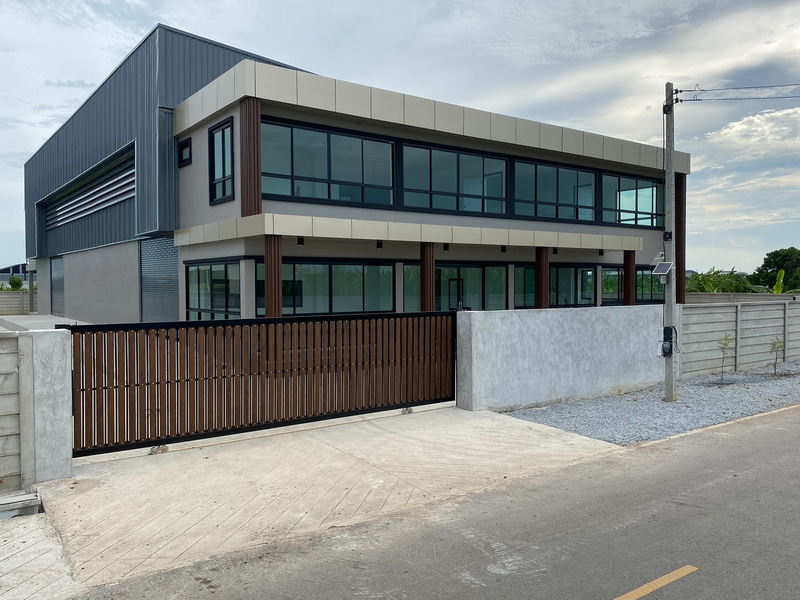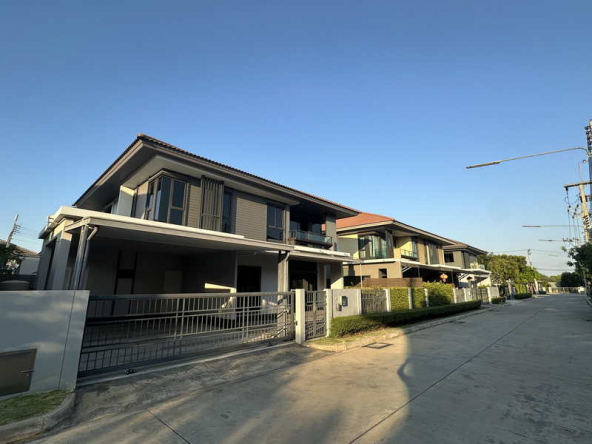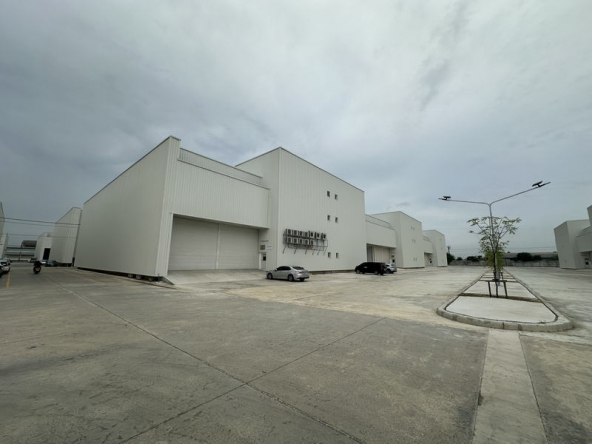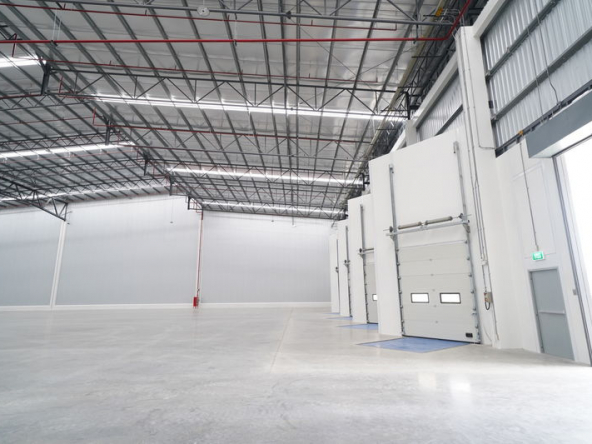Lots of commercial and industrial business owners in Thailand are searching for a reliable and honest guide to Bangkok min-factory and warehouse investments.
In the fiercely competitive investment landscape, industrial properties have emerged as a highly promising asset class. This guide offers a comprehensive exploration of successful industrial investments in and around Bangkok with a major focus on mini-factories and warehouses. Here are some of the hidden strategies and considerations that can lead to long-term financial gains.
By clarifying investment intentions, aligning stakeholders, identifying redevelopment opportunities, and evaluating entry and exit strategies, investors can maximize their returns in this dynamic sector.
A good example of this to get the ball rolling is this stunningly perfect Pathum Thani Bangkok Factory at Lam Luk Ka that is only 50k THB per month rental or 7.5 million THB for the affordable sales price.
Please click on this Bangkok industrial properties link to find some other examples of Bangkok mini-factory and warehouse for sale and rental options currently in the marketplace.
With the guidance of industry professionals such as Hero Realtor Bangkok, investors can confidently navigate the industrial investment landscape and unlock its untapped potential. Are you ready to explore the subject of Bangkok mini-factory and warehouse investments? Let’s do it!
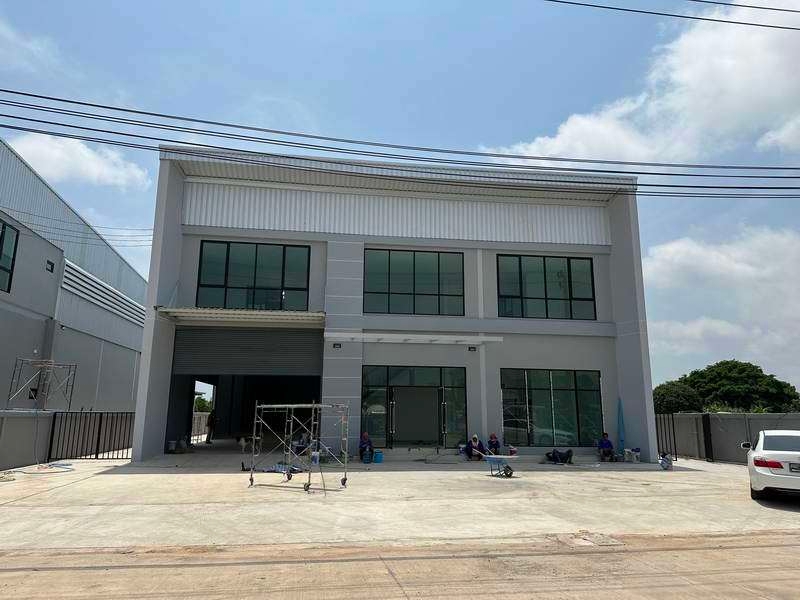
Bangkok Mini-Factory and Warehouse Investments: Key Takeaways
– Determine investment ambitions and clarify intentions to all parties involved
– Look for assets in areas with strong transport links and good infrastructure for future-proofing investments
– Stay active in the market, read market research, and speak with agents to seek out investment opportunities
– Secure income by reviewing potential tenants’ financial history, understanding their needs, and considering longer leases for income certainty
Determining Investment Ambitions
Determining the investment ambitions is crucial in the process of selecting profitable industrial assets that align with the desired goals and strategies. It is essential to clearly identify and define the investment goals before diving into the market research. This allows investors to focus their efforts and resources on assets that have the potential to meet their specific objectives.
Market research plays a vital role in this process, as it provides valuable insights into the current market conditions, trends, and potential opportunities. By analyzing data and market trends, investors can make informed decisions based on objective and analytical information. This ensures that the selected industrial assets have the potential to generate the desired returns and contribute to the overall investment goals.
Clarifying Investment Intentions
Once investment ambitions have been determined, it is imperative to clarify investment intentions to all stakeholders involved, ensuring transparency and alignment of goals. This step is crucial in order to avoid misunderstandings and to establish a clear direction for the investment. Here are five key points to consider when communicating investment plans:
- Setting investment goals: Clearly define the objectives of the investment, whether it is to generate a steady income stream or to achieve long-term capital appreciation.
- Communicating investment plans: Share the investment strategy with all relevant parties, such as partners, lenders, and potential tenants, to ensure that everyone understands the intended approach.
- Addressing risk tolerance: Discuss the level of risk that the investment entails and make sure that all stakeholders are comfortable with it.
- Establishing timelines: Clearly communicate the expected duration of the investment and any milestones or exit strategies that may be involved.
- Managing expectations: Be transparent about the potential challenges and limitations of the investment, and discuss any contingencies that may need to be put in place.
Ensuring All Parties Are Aligned
To ensure successful collaboration, it is essential to continuously communicate and align the expectations and objectives of all parties involved in the investment, fostering a sense of collective responsibility.
Building trust is a crucial aspect of this process, as it establishes a transparent relationship with agents and vendors.
Effective communication is equally important, as it ensures that all parties have a clear understanding of the investment goals and objectives. This includes clearly defining the investment intentions to agents, vendors, and oneself. By doing so, it becomes easier to establish a common vision and work towards achieving it.
Regular updates and open dialogue help in maintaining alignment and addressing any concerns or challenges that may arise.
Ultimately, by fostering trust and effective communication, the chances of a successful investment are significantly enhanced.
Upgrading and Selling the Property
The upgrading and selling of the property can be a strategic move to maximize returns on industrial investments. Renovations and upgrades can significantly increase the value of the property, making it more attractive to potential buyers or tenants.
Here are five key considerations for maximizing returns through property upgrades:
– Conduct a thorough cost-benefit analysis to ensure that the renovations and upgrades will generate a positive return on investment.
– Focus on improvements that will enhance the functionality and efficiency of the industrial space, such as upgrading the infrastructure or installing energy-saving technologies.
– Consider the market demand and trends in the industrial sector to determine the most valuable upgrades that will appeal to potential buyers or tenants.
– Ensure that the upgrades comply with relevant regulations and standards to avoid any legal or compliance issues.
– Market the upgraded property effectively to attract the right buyers or tenants and negotiate favorable terms to maximize returns.
Future-Proofing Your Investment
Identifying assets that meet specific criteria and considering future redevelopment opportunities are crucial steps in future-proofing your investment in industrial properties. To maximize returns and mitigate risks, here are five key considerations:
– Location: Look for assets in areas with strong transport links and good infrastructure, as this will attract tenants and ensure shorter delivery times.
– Redevelopment potential: Identify properties with potential for future redevelopment to increase their value and attract a wider range of tenants.
– Entry and exit strategies: Evaluate the best strategies for entering and exiting the market, considering factors such as market conditions, demand, and potential returns.
– Market activity and trends: Stay active in the market by attending auctions, viewing listings, and reading market research to identify potential opportunities and stay informed.
– Financial stability: Review potential tenants’ past payment and financial history, hold security deposits, and consider longer leases to ensure a steady income stream and mitigate risks.
Considering Strong Transport Links and Infrastructure
Investors should prioritize industrial properties located near strong transport links and infrastructure, as these factors contribute to increased tenant attraction and efficient logistics.
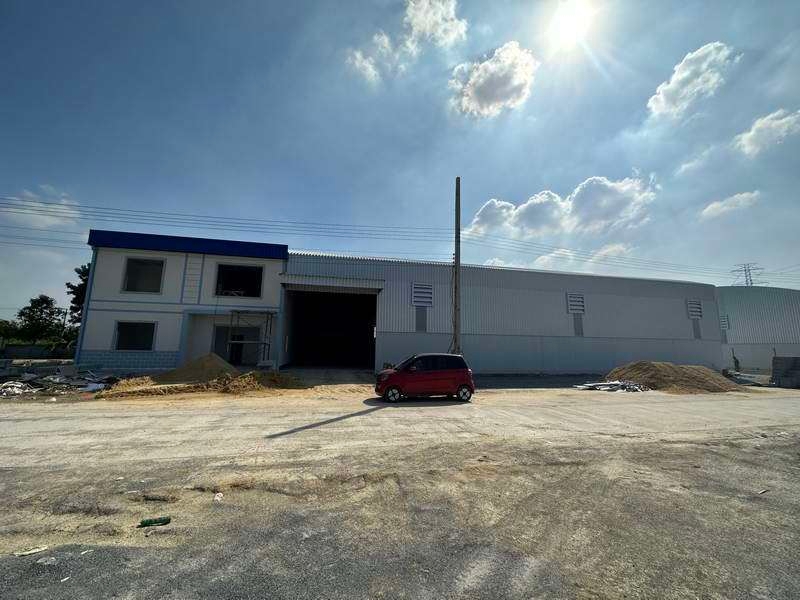
When considering location accessibility, evaluating market demand should also be taken into account. Industrial properties situated near major transportation hubs, such as highways, ports, and airports, provide easy access for distribution and transportation of goods. This not only reduces transportation costs but also improves supply chain efficiency.
Additionally, properties with good infrastructure, such as well-maintained roads, utilities, and telecommunications networks, are more attractive to tenants as they ensure smooth operations and connectivity. These factors can enhance the overall value and profitability of industrial investments.
Therefore, investors should carefully assess the proximity of industrial properties to strong transport links and infrastructure when making investment decisions.
Identifying Redevelopment Opportunities
Developers can explore and capitalize on redevelopment opportunities by partnering with local authorities and leveraging their expertise in urban planning. This strategic approach allows developers to identify potential areas for redevelopment and evaluate market demand.
By working closely with local authorities, developers can gain valuable insights into the needs and priorities of the community, ensuring that their redevelopment plans align with the overall vision for the area. Additionally, developers can tap into the local authorities’ knowledge of zoning regulations and land use policies, which can greatly streamline the redevelopment process.
Through this collaboration, developers can make informed decisions about which areas to target for redevelopment and how to best meet the market demand for new and improved urban spaces.
Evaluating Entry and Exit Strategies
Assessing the potential risks and returns, as well as carefully analyzing market conditions, is crucial when evaluating entry and exit strategies in industrial investments.
Exit strategy evaluation involves a comprehensive assessment of the market conditions to determine the optimal time to sell or divest from the investment. It requires a thorough risk analysis to identify potential threats and mitigate them effectively.
Risk analysis involves evaluating factors such as economic trends, market demand, competition, and regulatory changes that could impact the investment. By conducting a detailed risk analysis, investors can make informed decisions about when and how to exit their industrial investments, maximizing their returns and minimizing potential losses.
It is essential to constantly monitor market conditions and adjust exit strategies accordingly to ensure the best possible outcomes.
.jpg)
Final Thoughts on Bangkok Mini-Factory and Warehouse Investments
In conclusion, successful industrial investments require careful consideration of investment intentions, alignment with stakeholders, and proactive market analysis. It’s important to know your stuff when looking for reliable Bangkok Mini-Factory and Warehouse Investments.
Investors must also prioritize upgrading and selling properties, finding reliable long-term tenants, and future-proofing investments through redevelopment opportunities.
Strong transport links and infrastructure are crucial factors to consider, along with evaluating entry and exit strategies.
By following these strategies and working with industry professionals, investors can unlock the untapped potential of industrial properties and achieve long-term financial gains. As the saying goes, ‘Success comes to those who plan and persevere.’
For more info on the subject or to talk to a trusted Bangkok real estate agent that understands the Bangkok Mini-Factory and Warehouse Investments market, please click here to contact Hero Realtor Bangkok.



